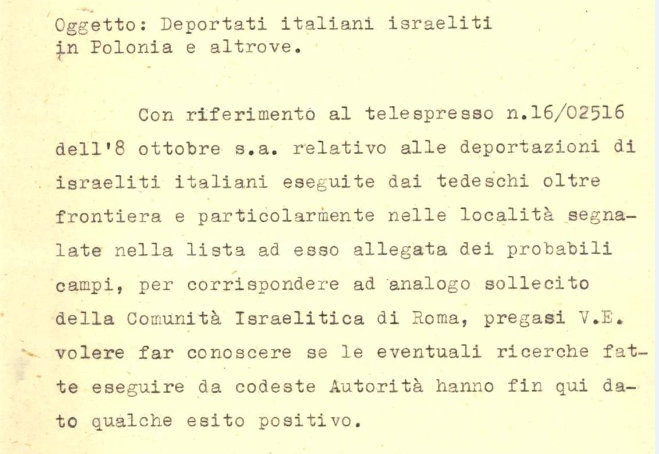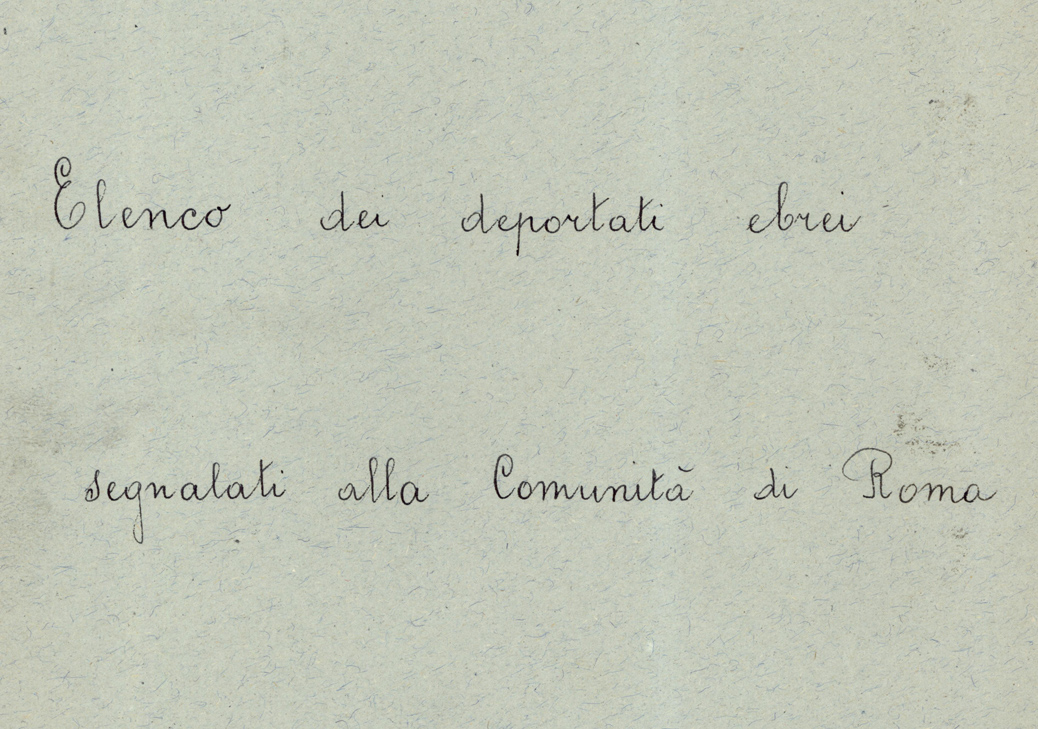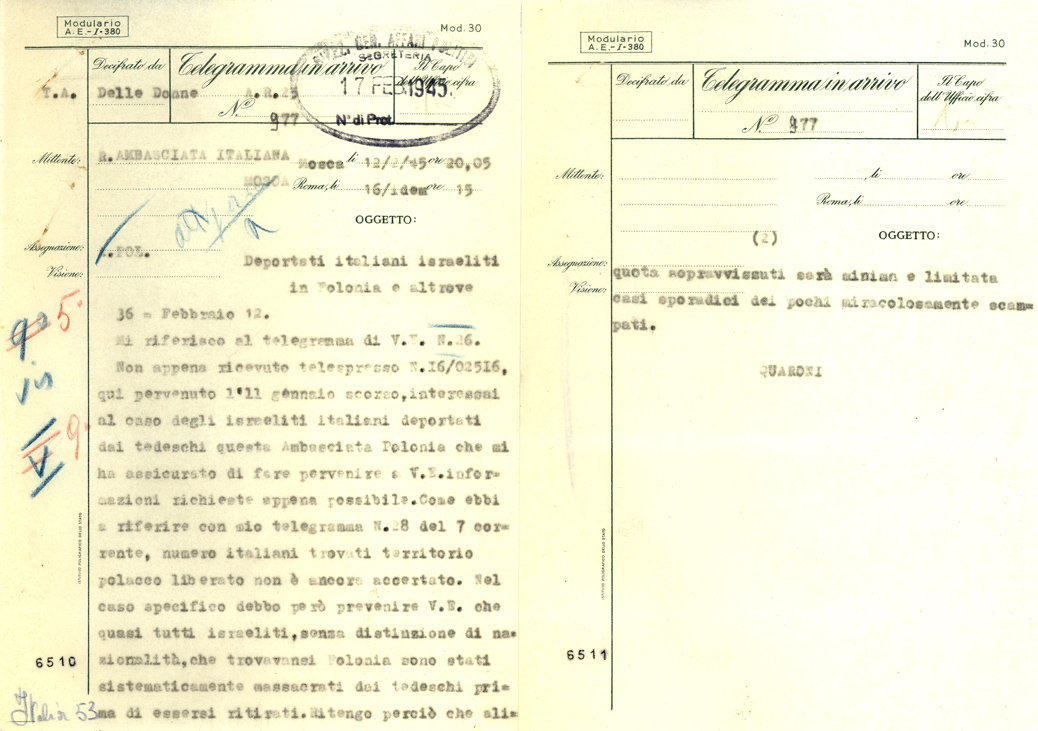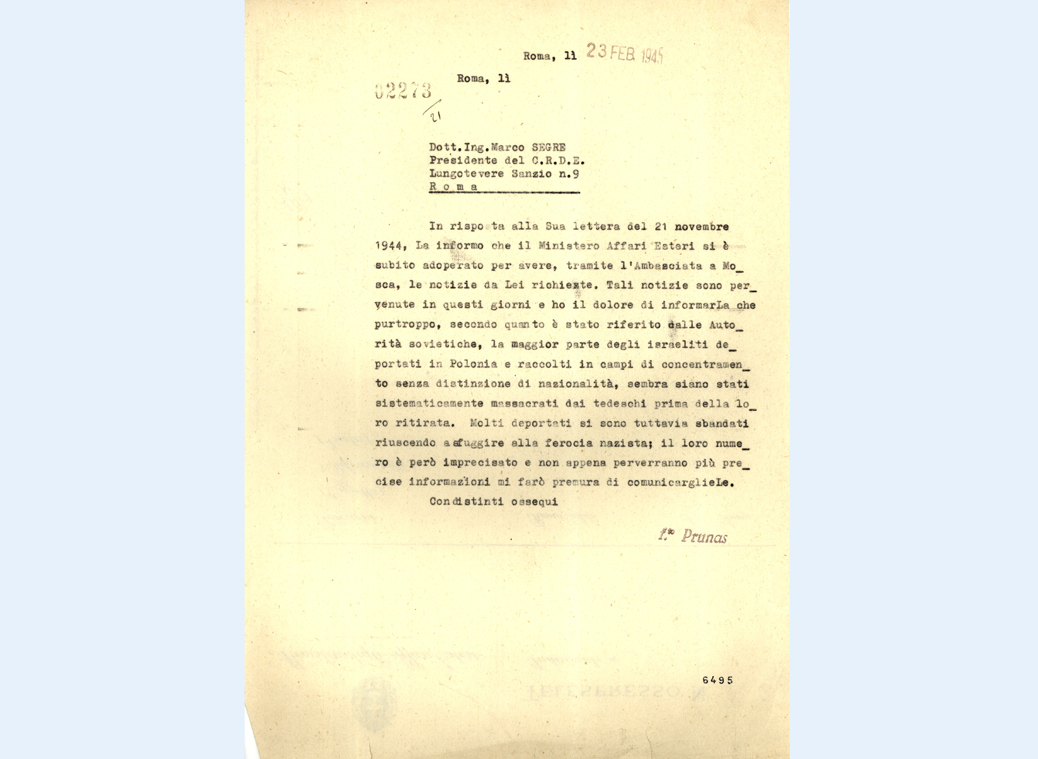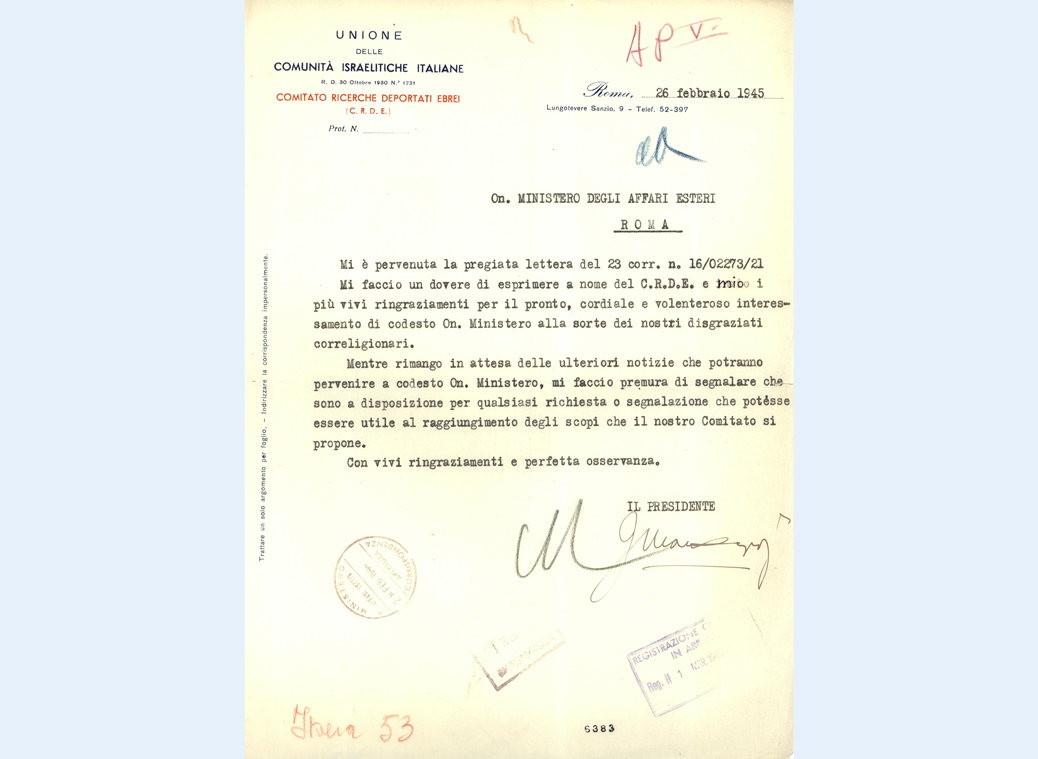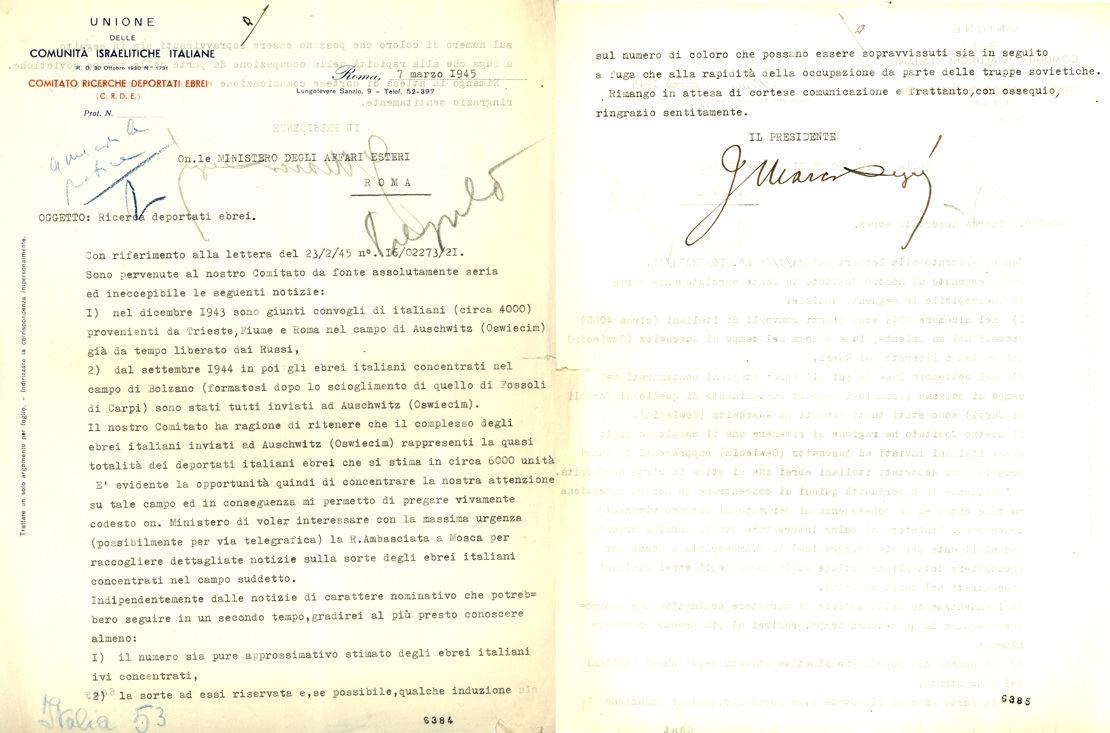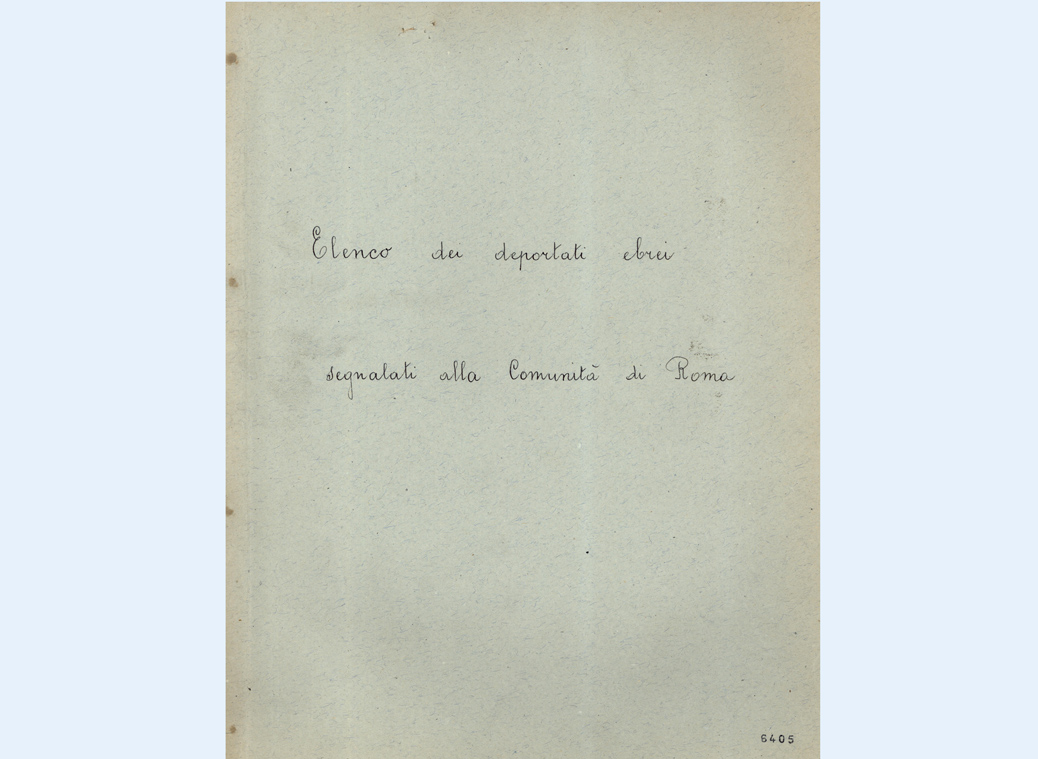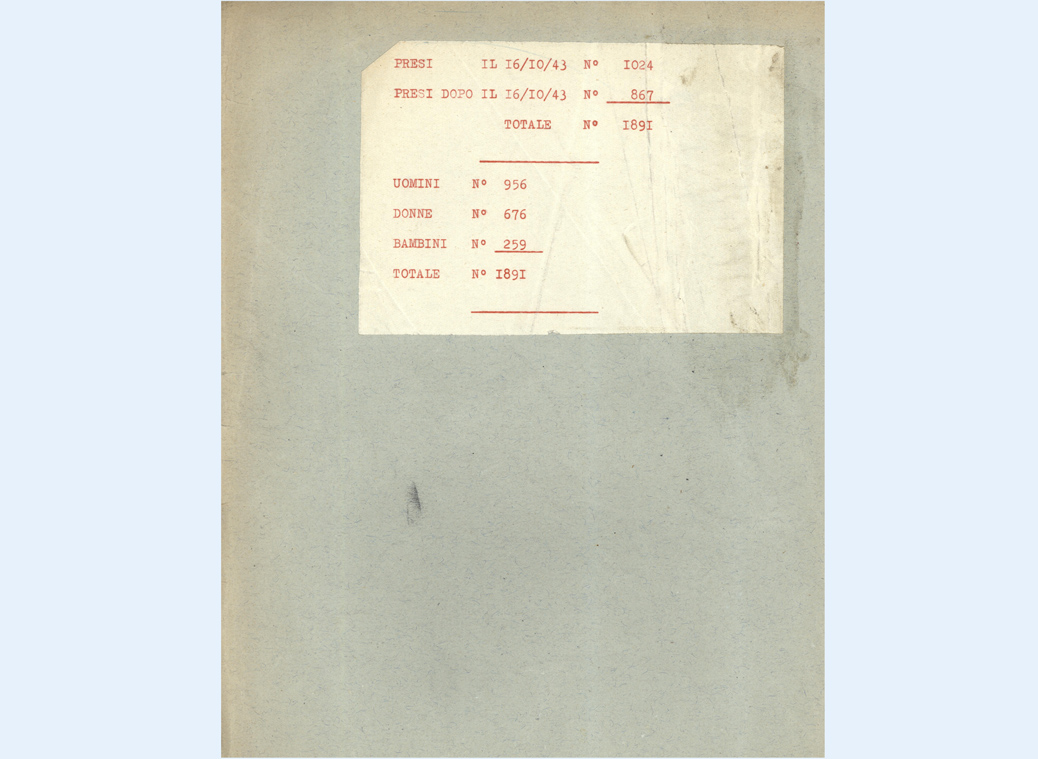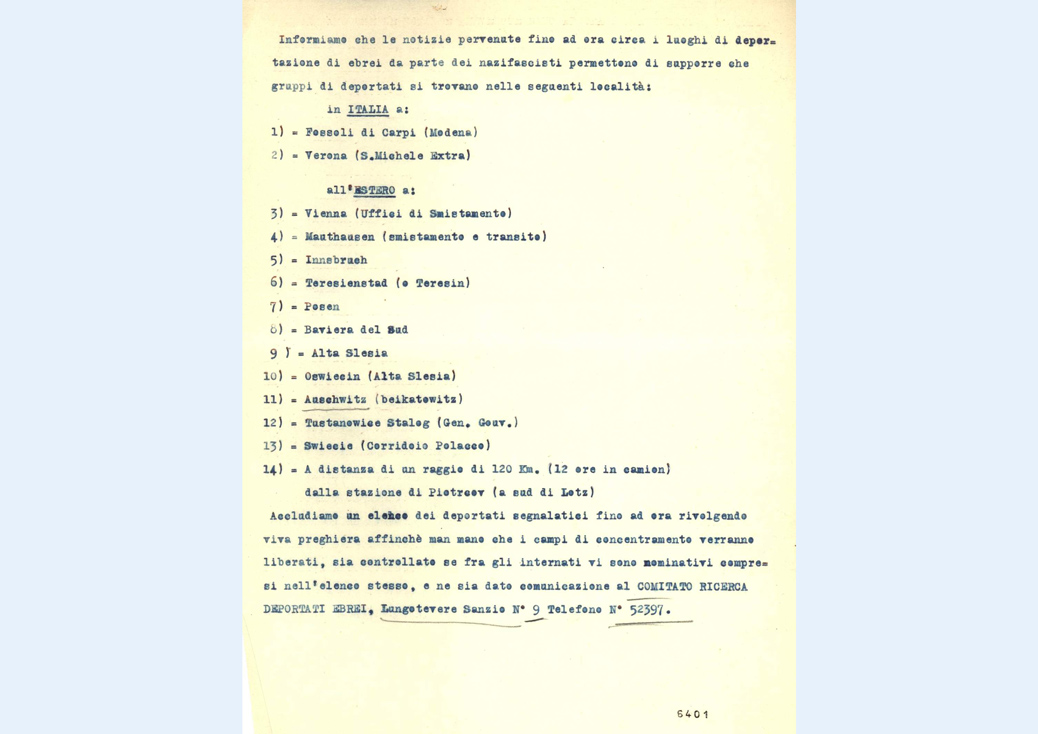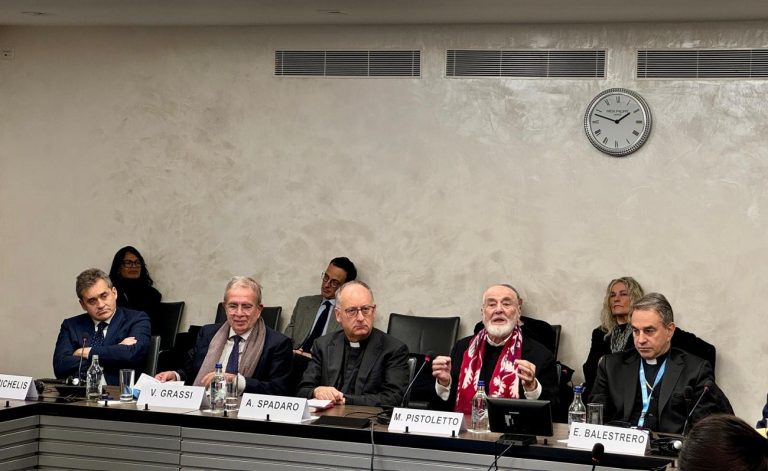On 27 January 1945, the Red Army liberated the Auschwitz-Birkenau concentration camp in Poland (1940-1945). More than 6,000 Jewish deportees from Italy were imprisoned there, representing the vast majority of Italian prisoners in Nazi concentration camps. Only a few Italian Jews were sent to other camps, such as Bergen-Belsen and Buchenwald. Many of the deportees came from Rome, the scene of one of the most tragic episodes of Jewish persecution in Italy: the raid on the Roman Ghetto on 16 October 1943.
Among the records held in the Historical Diplomatic Archive of the Italian Ministry of Foreign Affairs and International Cooperation (MAECI) is a list of deportees from Rome’s Jewish community, consisting of hundreds of pages filled with names, birth dates, and deportation dates. This document, compiled by the Committee for Research in Rome, was part of a series of lists concerning deportees from various Italian Jewish communities. These lists were sent to Italian consular representations across Europe, along with information about the likely locations to which deportees had been sent.
The documentation preserved in the MAECI Historical Diplomatic Archive also reveals the efforts of Italian diplomats in response to appeals from the Committee for the Search of Deported Jews of the Union of Italian Jewish Communities, which sought information on Auschwitz survivors. Pietro Quaroni, one of Italy’s most significant post-war diplomats, served as Ambassador to Moscow from 1944 to 1946. In this role, he maintained contact with Polish authorities, working to estimate the number of Italian survivors of Auschwitz and to ensure assistance for their return to Italy.

